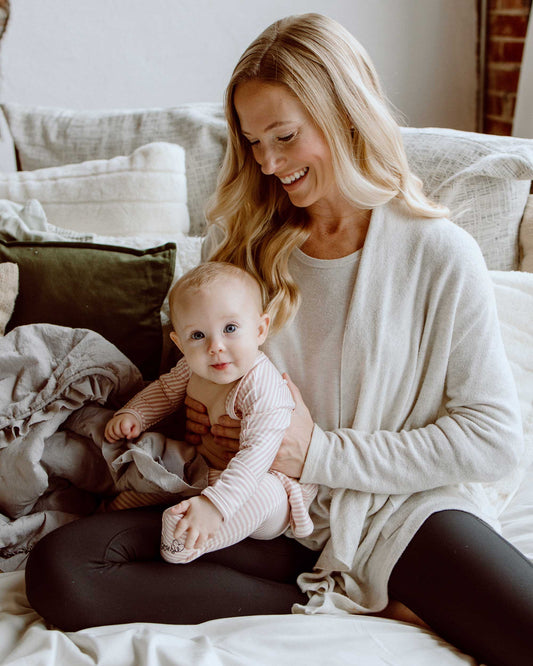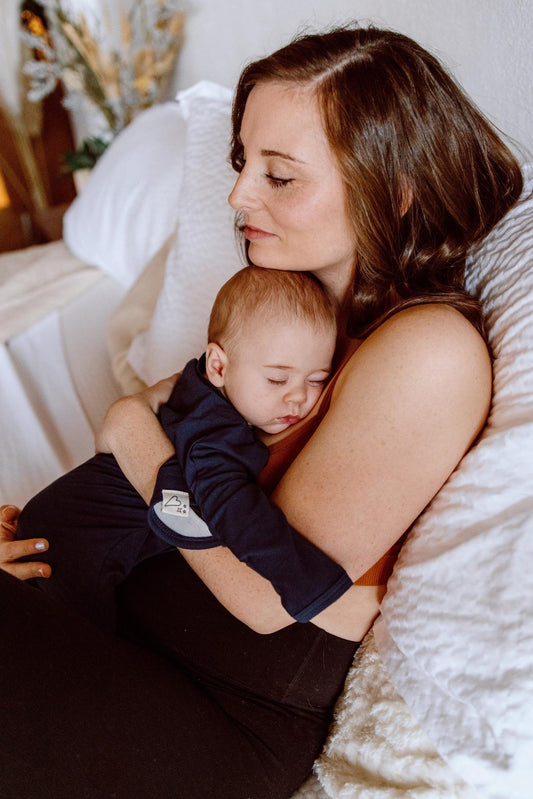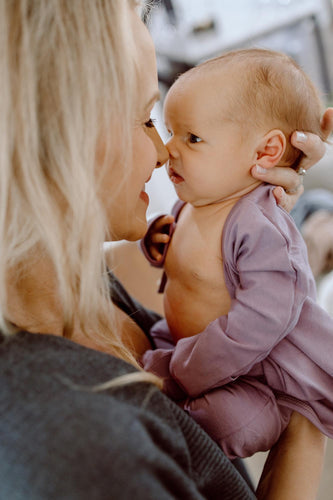Share
What is Omphalocele? Hazel’s Story.
Pranav JhadavErica found out she was pregnant with her baby, Hazel, in February of 2023. An ultrasound in April revealed that Hazel has omphalocele, meaning her abdominal organs are in a sack on the outside of her body.

Hazel in the hospital.
“The weeks following were so scary because we didn't have answers to questions like her quality of life, or if she would even live. After multiple tests and lots of heartache we finally found out that there were no genetic conditions associated with the omphalocele and that it was an isolated case,” Erica said.
Erica’s pregnancy was closely monitored and at 34 weeks Hazel made her debut via C-section at the University of Utah Hospital. Hazel was at Primary Children's NICU for 47 days. Hazel’s medical conditions included: pulmonary hyperplasia (underdeveloped lungs), giant omphalocele, and anemia.
“The first two weeks we weren't able to hold her and it was so hard, but once she was stable and thriving we were finally able to snuggle her as much as we wanted! As we became more comfortable with her and her special needs we started to help the nurses more and more with her care. Every three hours we were able to help change her diaper, take her temperature and change her SpO2 sensor.”

Erica and Hazel.
Erica and her husband have two other children, and the NICU was 90 minutes from home. Due to the drive and other responsibilities, they maximized their time at the NICU by holding her and practicing skin-to-skin contact as often as possible.
“Although it was hard to have her in the NICU, I will always cherish those special days where I wasn't required to do anything but hold and love her to help her heal. It was during these times that we did skin-to-skin and instantly saw the results. I loved that while we did skin-to-skin we would see and feel her relax."
"During the early days Hazel always had a high heart rate and quick breathing, but when we did skin-to-skin her vitals on screen would go down and regulate. It was so special!”

Hazel and her family on the day she was discharged from the NICU.
Amidst all the uncertainties of the NICU, Erica could count on skin-to-skin time as a way to bond with Hazel.
“When you have a baby in the NICU there are lots of things you don't get to do, and I worried so much about not bonding with her in the way that I did with my other kids. However, doing skin-to-skin helped fill that void and help us connect in our own special way. She had lots of skin-to-skin time with me and my husband.”
Hazel is home, off oxygen, and doing very well. Her omphalocele is still exposed, but when there is more room for her organs she will have surgery. Bonsie is proud to play a small role in keeping Hazel comfortable.
“Bonsie was so helpful during our NICU stay. Because of Hazel's unique condition, the Bonsie wrap seemed to be the perfect fit for her cute tummy. When we talked to our feeding therapist she explained how most babies' skin-to-skin time drastically drops when the babies start to get dressed in outfits. Her Bonsie made it so easy for us to be able to do skin-to-skin without the work of removing clothes and fixing wires.”

Hazel going home from the hospital.
Share
-
Category:
- All posts




